SERENDIPITOUS PMD EMERGERS
Not as in Serendipity, which is a famous fly, but as in serendipitous, like when a bunch of things come together to cause a particular result. Without listing all the things that converged to make these flies emerge, suffice it so say that it was an unusual set of circumstances that resulted in this fly coming off the vice.
The fly was tied for a very early PMD hatch on my home water in Northern Idaho. Early as in mid-April. And it has been a hatch that produced very large PMDs that hatched somewhat later in the day than the PMDs that I am accustomed to.
Several versions of the fly, the loop wing demonstrated here, and a couple different parachute versions tied in the 9DH style, have been fished a number of times to the hatch for which they were created.

Materials:
The materials are brown antron yarn for the furled extended body, pheasant tail fibers to be incorporated in the FEB as a trailing shuck, CDC for the loop wing, and grizzly hackle. The fly is tied on a size 14 2X short emerger style hook with yellow thread.
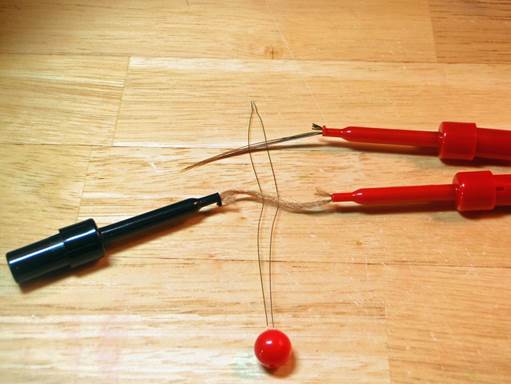
Capture the ends of a piece of antron yarn in electrician's test clips and the end of a bundle of five or six pheasant tail fibers in another clip.
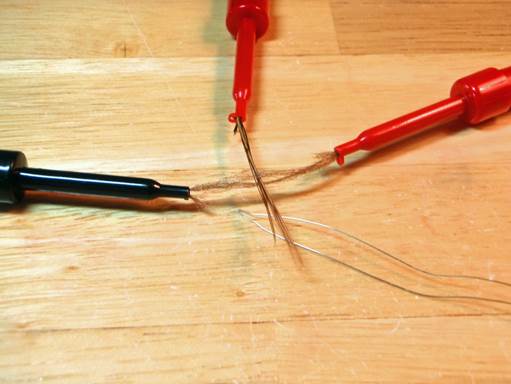
Run a bobbin threader through the center of the antron yarn and pull the pheasant tail fibers through the antron.
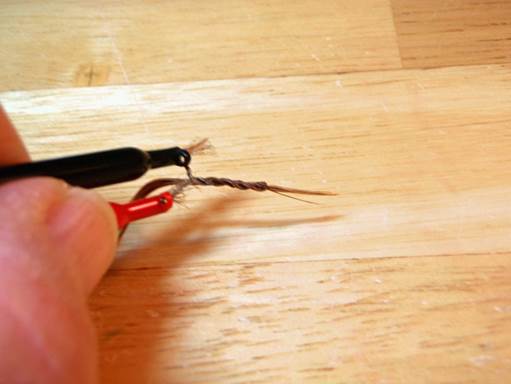
Center the PT fibers as best possible between the ends of the antron. Twist the electrician's clips holding the antron in opposing directions for a very tight twist. It takes me about 11 or 12 twists to achieve the desired twist. (Do take care to not let the PT fibers slip out of position while twisting the antron. For whatever reason, the PT fibers are quite prone to getting out of control.)
After twisting the antron, holding both clips in one hand, grasp the twisted antron at the point where the PT fibers emerge, and pull up, initially maintaining tension, and twist the antron in the direction it wants to furl along with the PT fibers while reducing tension. The furled extended body with incorporated tails should look like this. (The length of the emerging PT fibers can be adjusted by carefully and slowly pulling either the tip or tag ends.)
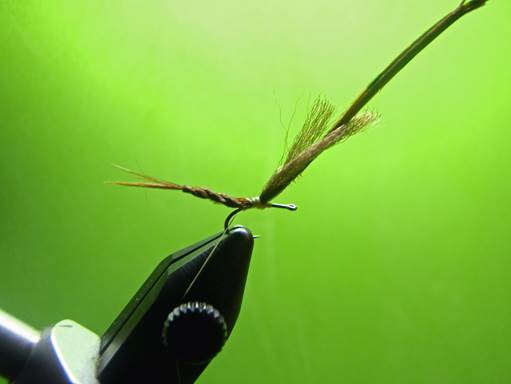
Secure the FEB to the hook shank just ahead of the bend. Trim the waste.
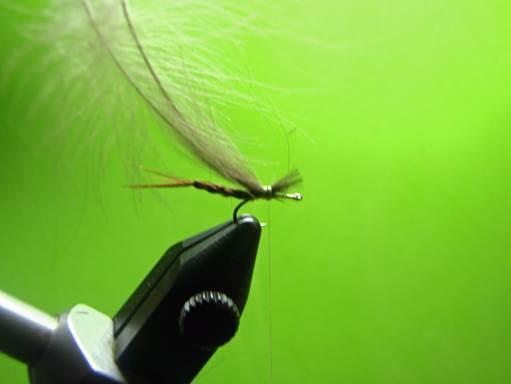
Even the tips of two CDC feathers. Tie in the CDC feathers by the tips where the FEB waste was trimmed. Take enough wraps with the tying thread that it substitutes for dubbing in building up a bit of tapered body ahead of the FEB.
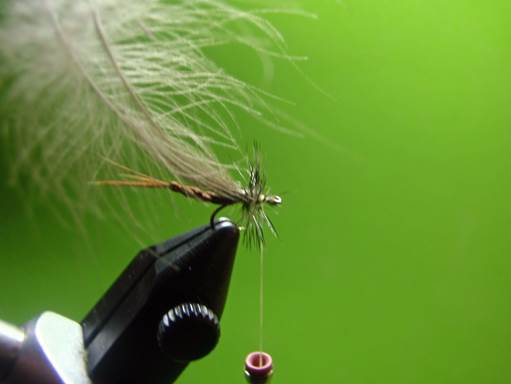
Tie in grizzly hackle ahead of the CDC tie in point. Take several wraps forward with the hackle and tie off.
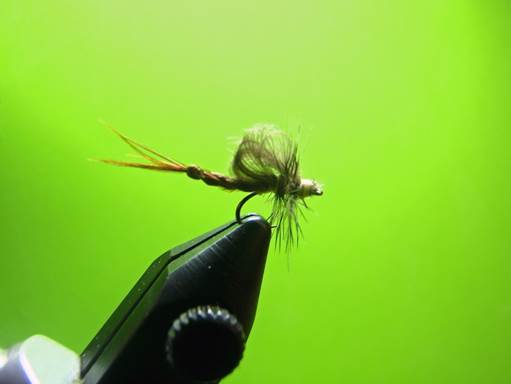
Pull the CDC forward over the hackle to form the loop wing and tie off. Build up something of a head with the tying thread before whip finishing.
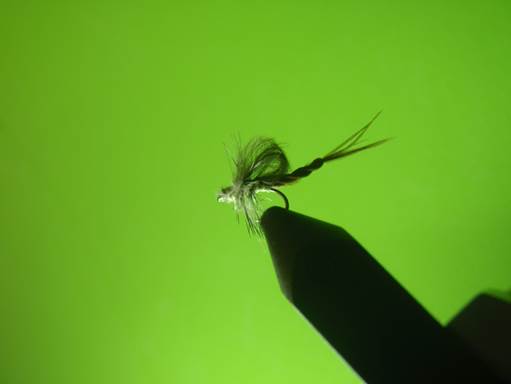
And take a look from the fish's point of view.
The FEB of the 9DH versions are built the same way as shown above. After securing the FEB to the hook, simply add an antron post and then compete the 9DH.
These flies have done quite well fished to the nearsighted, colorblind, dumb and starving fish that I chase on my freestone crick home water in Northern Idaho.
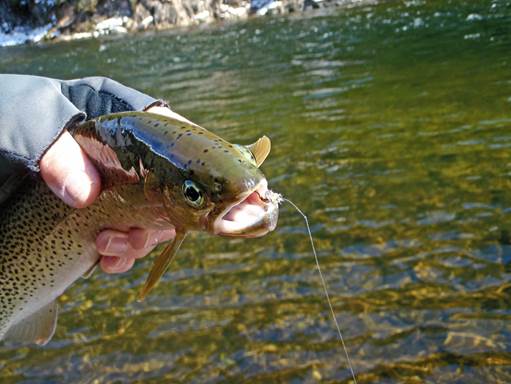
The fish have eaten them when presented on nearly still water in large back eddy pools, over medium depth / medium current runs, and in heavy water over highly structured fast riffles and in pockets. The flies have usually been taken when presented on the surface in a dead drift, but have also been taken when fully submerged and when stripped slowly upstream ahead of rising trout.
For more great info, check out:
Beginning Fly Tying | Intermediate Fly Tying | Advanced Fly Tying.
